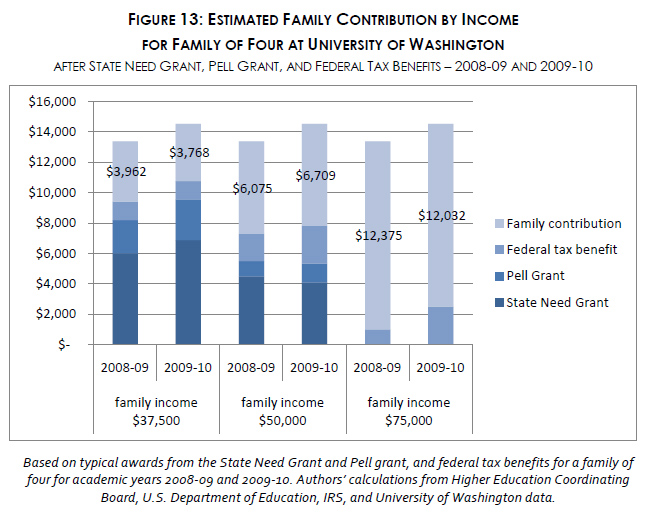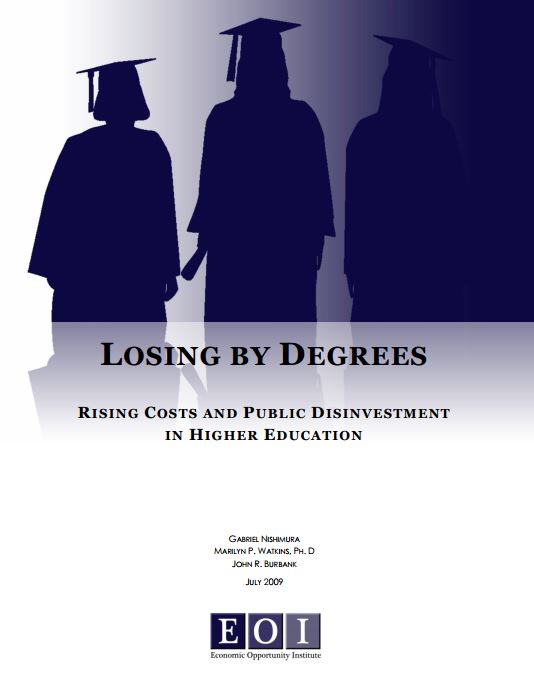With the start of a new school year, both first-year and returning college students are buying books and preparing to pay for their first term of university tuition. But with the prospect of mountains of debt and no guarantee of a job in these uncertain economic times, many recent high school grads are taking a different approach to a college degree:
[Students] are shifting from private to public colleges, taking “gap years” after high school to save money or attending school part-time while working, based on enrollment figures and anecdotal evidence from admissions counselors and other experts.
To cover the extra costs, parents are increasingly dipping into retirement savings and loading up on debt. So are their children. Read more from the Spokesman-Review »
These changes stem somewhat from recessionary pressures; prospective students are worried about getting a job after graduation, and parents are concerned about paying for college in an uncertain job market. But in large part, they are due to the ever-increasing cost of a college education.
As reported in EOI’s policy brief Losing by Degrees, the “high-tuition/high-aid” model – in which colleges charge higher tuition overall, but offer larger financial assistance packages to low-income students – is actually a step backward in terms of access and affordability for all but the wealthiest of students.
It sounds good on paper. But the results show a fundamental flaw in the outcome: high levels of financial aid are typically available only to the poorest of students, dropping off sharply for families of middle-income students. This limits students of middle income families to meager amounts of tuition aid, requiring those students and their families to take on heavy debt in order to go to college.
 Washington state began moving toward that model even before the recession. Today, Samuel Smith, president emeritus of Washington State University and a member of the Washington State Higher Education Coordinating Board, addressed the need for dedicated funding to higher education in this Seattle Times op-ed:
Washington state began moving toward that model even before the recession. Today, Samuel Smith, president emeritus of Washington State University and a member of the Washington State Higher Education Coordinating Board, addressed the need for dedicated funding to higher education in this Seattle Times op-ed:
We need a greater public awareness that our decreasing state funding is hurting our citizens’ abilities to get a college education. With our state’s policy of high tuition and high financial aid, we are increasingly seeing the children of the wealthy go to college while the children of the hardworking, average family do not.
Washington’s regressive and outmoded tax structure has been squeezing public dollars our of higher education for decades. Today, the state’s already-narrow tax base continues to shrink relative to the whole economy, while relying too heavily on contributions from low- and middle-income state residents and taxing the wealthy too lightly.
The high-tuition/high-aid model amounts to another body blow to the state’s middle-class. Without fundamental tax reform – such as offered by Initiative 1098 – Washington state will not be able to raise sufficient public revenues to build the education system that our students deserve, and our state needs to remain competitive in the global economy over the decades ahead.
More To Read
February 11, 2025
The rising cost of health care is unsustainable and out of control
We have solutions that put people over profits
January 29, 2025
Who is left out of the Paid Family and Medical Leave Act?
Strengthening job protections gives all workers time they need to care for themselves and their families
January 17, 2025
A look into the Department of Revenue’s Wealth Tax Study
A wealth tax can be reasonably and effectively implemented in Washington state

